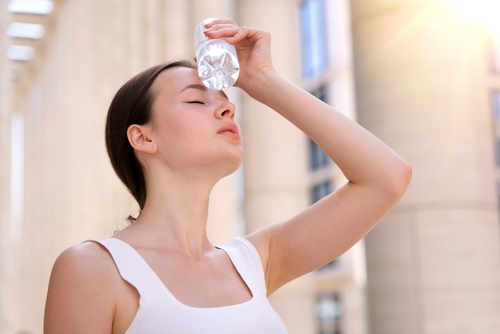As heatwaves sweep across the US, marking the start of summer, I was kindly reminded by the 110+ degree weather outside (In SEATTLE, WA) that the body has some pretty cool features. Here is a quick rundown of some of the physics-based and physiological phenomena that help keep us humans healthy in the heat.
The Physiology of Body Heat
For starters, our bodily mechanisms operate best within 1-2 degrees of 98 Fahrenheit. Keep in mind, our body is always producing heat as a byproduct of other biological or physiological systems, called thermogenesis (via our internal organs, muscles, brain, etc.). At some level, we always have to be shedding that heat into our environment to maintain thermal homeostasis. As the outside temperature rises, it becomes harder and harder to shed that heat (for reasons we’ll explore below). So, when the external environment presents us a scorching challenge, our bodies actively and passively take advantage of four separate means of energy transfer:
- Conduction: energy transfer through physically touching objects
- Convection: energy transfer through gas or water
- Radiation: energy transfer via infrared (electromagnetic) waves
- Evaporation: transfers heat through a matter state change from water to gas
On an average day, our bodies shed about 3% heat through conduction, 27% through convection, 30% through evaporation, and upwards of 40% through radiation.
What happens when the environmental temperature starts getting closer to or exceeding our internal temp? Sure, we can always jump into the shade, cover ourselves in ice packs, or just remove clothing to stay a little cooler, but trying to find a cool bench to sit on won’t cut it at the point of exceeding internal temperature equilibrium.
Even that radiating heat won’t have a place to go if the environment is hotter than we are (according to the laws of thermodynamics, and my own personal experience the other day). Convection can be of some help – a stiff breeze, a fan circulating air – these heat exchanges do a good job to keep the air mixing and pulling heat from the surface area of our body. But during heavy exercise or on a hot day, our bodies start to rely more heavily (think 85%) on evaporation.
Sweat for the Win
Yup, sweat.
Our bodies internal mechanisms trigger vasodilation (opening of the blood vessels), which forces more of that warm red stuff to the arterioles and capillaries, transferring heat to the skin and water in our sweat. The hairs on our skin even flatten to make the heat exchange easier, our body’s best leftover evolutionary attempt at limiting thermal insulation. When some of the water molecules get excited enough, that energy breaks the hydrogen bonds and pulls it into the surrounding environment as a gas.
No, we’re not boiling off water…that happens at 212 degrees Fahrenheit. There’s actually a graphable slope effect to water vaporization, which is why water can evaporate at room temperature. Evaporation is simply more effective the higher the external temperatures are. And those of you who are usually dripping with sweat in this kind of example, you’re getting rid of that hot water even faster.
The Heat and Humidity Factor
Ahh, but don’t forget about humidity. The more humid it is, the more water vapor is in the air. The closer we get to 100% relative humidity, the harder it is for our sweat to evaporate and be added to the surrounding volume already heavy with moisture. Your best bet here is to towel off, hydrate, and get out of that environment – sweat won’t save you.
So, when it’s hot out, keep these concepts in mind. Sweat is good, but make sure to keep your hydration, salts, and potassiums in balance. Fast moving air can help, conduction through ice packs or towels drenched with cold water are also great aids in relieving overheating.
Extra Tidbits:
1. Don’t forget, Vitamin D is a necessary hormone that gets made in and on our skin through UV radiation exposure from the sun. So let that sweat happen!
2. Physiological heat acclimatization can happen within 1-2 weeks! Your body WILL adapt, just give it time. Some recommend 90 min exposure per day to adapt quickly!
3. Your heart rate can adapt to hot environments within seven days, and your other physiological processes can catch up within 14 days.
Keep it cool!
Dr. Patrick K. Silva is a Board Certified and Licensed Doctor of Chiropractic with a focus on Sports Rehab, practicing in the beautiful US Pacific Northwest. Building on his preceptorship with the Seahawks' chiropractor (Dr. Jim Kurtz) in 2016, Dr. Patrick has designed his practice around the numerous soft tissue techniques, movement systems, and rehabilitative paradigms that modern sports science has to offer. Dr. Patrick is also a Certified Office Ergonomics Evaluator and Certified Professional Trainer. In his spare time, Dr. Patrick enjoys DIY projects and stays active practicing martial arts, soccer, dodgeball, parkour, and gaming.


